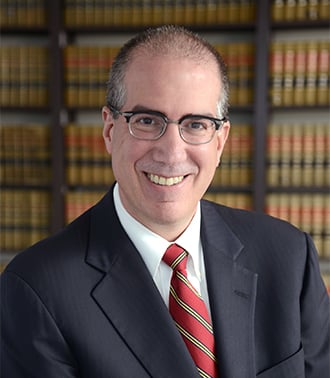Spotlight on President Biden’s Executive Order on Digital Assets With Focus on Cryptocurrency
On March 9, 2022, President Biden issued an Executive Order on Ensuring Responsible Development of Digital Assets (EO). The EO sets forth a “whole-of-government strategy” for approaching the federal regulation of digital assets, with a particular focus on consumer protection, financial stability, national security and climate-related risks. The EO’s stated policy objectives also include reinforcing “United States leadership in the global financial system and in technological and economic competitiveness,” and supporting “technological advances that promote responsible development and use of digital assets.” In short, the EO signals that the Biden Administration is committed to encouraging the safe and responsible development of digital assets in the United States.
In this regard, the EO calls for an “all hands on deck” approach with involvement required of over 25 federal agencies and offices,1 as well as potential legislation, to tackle identified areas of interest and concern in the development, regulation, and supervision of digital assets.
- Protect US consumers, investors and businesses in developing policy recommendations to address fraud, theft, abusive practices, and data and privacy breaches;
- Protect US and global financial stability by encouraging the Financial Stability Oversight Council to identify and mitigate systemic financial risks posed by digital assets and develop policy recommendations to address regulatory gaps;
- Mitigate potential illicit finance and National Security Risks posed by the digital assets through coordinated action across all relevant federal government agencies, as well as with international allies and partners to ensure international frameworks, capabilities, and partnerships are aligned and responsive to risks;
- Promote US leadership in technology and economic competitiveness to reinforce US leadership in the global financial system, with specific direction to the Department of Commerce “to work across the U.S. Government in establishing a framework to drive U.S. competitiveness and leadership in, and leveraging of digital asset technologies.” This framework will serve as a foundation for federal agencies in setting policies, research and development, and operational approaches to digital assets;
- Promote equitable access to safe and affordable financial services by “affirming the critical need for safe, affordable, and accessible financial services” in digital asset innovation, including disparate impact risk. The Secretary of the Treasury working with the relevant agencies, is required to produce a report on the future of money and payment systems, which must include implications for economic growth, financial growth and inclusion, and national security;
- Support technological advances and ensure responsible development and use of digital assets, with a specific direction to the federal government agencies to take concrete steps to study and support technological advances; and
- Proactively, explore a US Central Bank Digital Currency (CBDC). The President goes so far as to state, “[m]y Administration places the highest urgency on research and development efforts into the potential design and deployment options of a United States CBDC.” Pursuant to this direction, the EO encourages the Board of Governors of the Federal Reserve System to continue its research, development and assessment efforts and develop a plan for broader US government action, and also directs the entire US government to “assess the technological infrastructure and capacity needs for a potential US CBDC in a manner that protects Americans’ interests.” The EO also requires the Secretary of the Treasury to issue a report on “the extent to which foreign CBDCs could displace existing currencies and alter the payment system in ways that could undermine United States financial centrality,” and “an assessment of the effects that the growth of foreign CBDCs may have on United States interests generally.”
The EO orders the Secretary of the Treasury and other federal government offices and agencies to develop several studies and reports, with due dates ranging from 90 days with respect to National Security Risks and 180 to 210 days for assessing potential (i) financial stability risks, (ii) climate risks, (iii) consumer protection risks; and (iv) regulatory gaps with respect to digital assets and technological advances.
Key Takeaways
- The overall message is that the Biden Administration is committed to encouraging and supporting technological advances in the digital assets space.
- The EO includes formal definitions for terms like “blockchain,” “cryptocurrencies,” “digital assets,” and “Stablecoins,” suggesting that the US government is moving towards adopting universal definitions for these forms of technology. Whether the definitions accurately capture the nuances of these instruments remains a topic for further discussion.
- The EO includes a focus on international cooperation, and reinforcing US leadership in global finance through the development and implementation of digital assets, including related to research on CBDCs and a potential US CBDC.
- The EO indicates support for a US CBDC, especially with the emphasis of reinforcing the US’s leadership in global finance, but there also seems to be an interest in understanding how a US CBDC could potentially impact cryptocurrencies developed by private-issuers.
- The EO makes several references to the need to ensure that the technological architecture for digital assets protects and prioritizes “human rights,” with an emphasis on privacy and national security.
- Another important focus of the EO is climate change and the environmental impact of digital currencies.
Legislative Prospects for President Biden’s Executive Order
While the EO directs federal agencies to synchronize the US government’s approach to digital assets and close regulatory gaps, many of these report requirements, either explicitly or implicitly, invite recommendations for legislative changes that would give regulators new authorities. In terms of practical effect, the EO will contribute to congressional discussions that have been ongoing in the House Financial Services and Senate Banking Committees. In 2021, the committees held fact-finding hearings on developing a US CBDC, increasing investor and consumer protections, assessing systemic risks reported in the President’s Working Group on Financial Markets Report and Recommendations on Stablecoins, and addressing illicit finance concerns. Given that a number of the required reports are due in six months or more, it would seem most likely that any legislative recommendations would be taken up by the next congress, which may include a Republican led House. There is right now bipartisan consensus for the House-passed “Eliminate Barriers to Innovation Act of 2021” (H.R. 1602) for studying gaps in digital asset regulation between the SEC and the CFTC. There is also a plausible case for bipartisan agreement on Stablecoins legislation.
Outlook
From the language in the EO, it is clear that the Biden Administration has accepted that digital assets, and in particular cryptocurrencies, are here to stay. Its interagency directives seem focused on guarding against a number of concerns, but likewise expresses a commitment to US leadership in global financing, economic competitiveness and technological development. Although the EO understandably is short on specifics, these broad policy goals have received an enthusiastic response from crypto participants and the digital assets industry more generally.
© Arnold & Porter Kaye Scholer LLP 2022 All Rights Reserved. This Advisory is intended to be a general summary of the law and does not constitute legal advice. You should consult with counsel to determine applicable legal requirements in a specific fact situation.
-
The massive interagency effort will include the participation of multiple federal departments including the Secretary of State, the Secretary of the Treasury, the Secretary of Defense, the Attorney General, the Secretary of Commerce, the Secretary of Labor, the Secretary of Energy, the Secretary of Homeland Security, the Administrator of the Environmental Protection Agency, the Director of the Office of Management and Budget, the Director of National Intelligence, the Director of the Domestic Policy Council, the Chair of the Council of Economic Advisers, the Director of the Office of Science and Technology Policy, the Administrator of the Office of Information and Regulatory Affairs, the Director of the National Science Foundation, the Administrator of the United States Agency for International Development, representatives of the Board of Governors of the Federal Reserve System, the Consumer Financial Protection Bureau (CFPB), the Federal Trade Commission (FTC), the Securities and Exchange Commission (SEC), the Commodity Futures Trading Commission (CFTC), the Federal Deposit Insurance Corporation, the Office of the Comptroller of the Currency, among others. The Assistant to the President for National Security Affairs (APNSA) and the Assistant to the President for Economic Policy (APEP) have been tasked with coordinating the interagency process.






